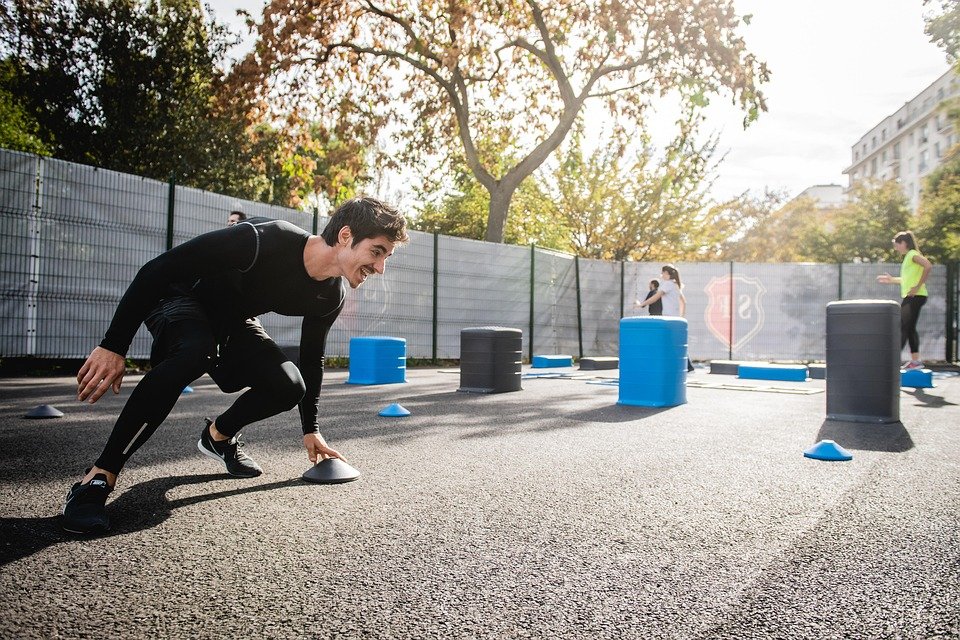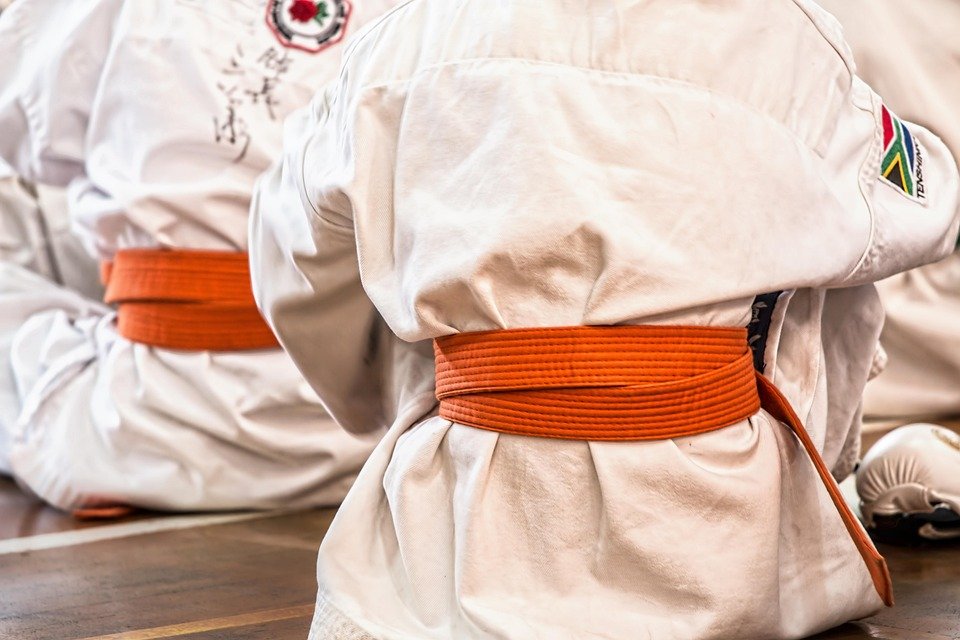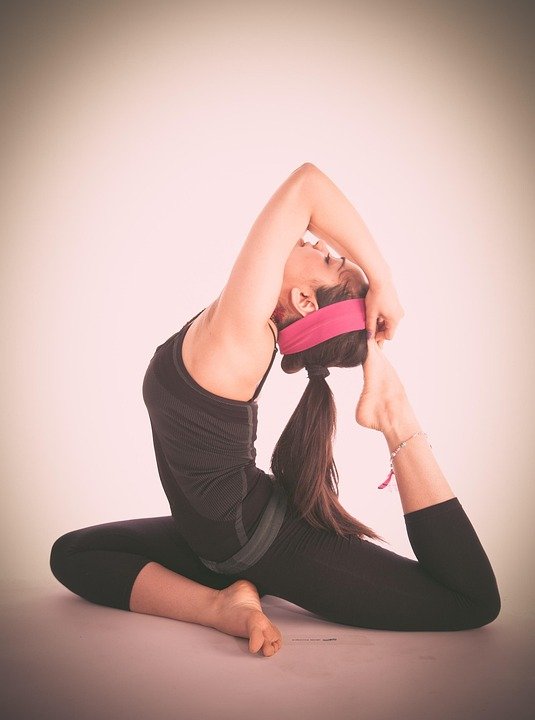A commercial gym or a room full of weight machines to get lean, muscular, and summer-ready is not a requirement. All you need is a dedicated space at home and a few pieces of equipment to get it on.
If you have a pair of dumbbells, a kettlebell, resistance bands, and a bench, plus a no-nonsense work ethic, you’re in business. You’ll train four days a week, with three strength workouts and one high-intensity conditioning session. The other three days? Active recovery, walking, or mobility to keep your body moving and ready to perform.
Sounds good, so far? Then this six-week home gym shred is for you. It is designed for lifters who want to strip fat, build muscle, and stay strong without leaving their homes. Let’s get started.
6-Week Summer Shred Program Prerequisite
This program is designed for lifters who have the equipment and the work ethic to use it. Whether you’re working out in a garage, spare room, or backyard, all you need is a small space and a focused mindset. Here is what you need.
Dumbbells: A light and heavy pair, or adjustable dumbbells, to progress each week.
Kettlebells: One moderate, one heavy, perfect for swings, squats, presses, and carries.
Resistance Bands: Long loop bands for rows, presses, and added resistance or assistance.
Bench or Sturdy Platform: Useful for presses, rows, and Bulgarian split squats.
Timer App or Stopwatch: Keeps you honest and efficient during circuits and rest periods.
The 6-Week Training Plan Lowdown
With four workouts per week, you’ll maintain muscle, torch fat, and stay consistent even with a busy summer schedule. Here is how it will go down if you choose to accept this mission.
Weekly Training Split
Day 1: Upper Body Strength: Push-pull supersets using dumbbells and bands to target your chest, back, shoulders, and arms.
Day 2: Lower Body Strength: A combination of squats and hinges to strengthen the lower body.
Day 3: Active Recovery / Mobility: Mobility drills, foam rolling, or a 20–30-minute walk to support recovery and fat loss.
Day 4: Full-Body Strength : A strength circuit combining dumbbells, kettlebells, and bodyweight exercises.
Day 5: Active Recovery / Walk / Mobility
Day 6: Conditioning & Core: High-intensity intervals using bands, kettlebells, and bodyweight exercises.
Day 7: Rest: Recharge your batteries and prepare to tackle the following week.
Session Format (30-45 minutes)
- Warmup (5 minutes): Dynamic movements to get ready
- Main Circuit (20–30 minutes): Strength or conditioning focus
- Optional Finisher (5 minutes): End strong
- Cooldown: Stretch, breathe, and recover
6-Week Summer Shred Workouts
Now that you know the game plan, let’s dive into the specific workouts for each training day. Perform a dynamic warm-up before each session, then get down to business.
Day 1: Upper-Body Strength
Goal: Build upper-body strength while maintaining muscle mass. You’ll focus on classical pushing and pulling exercises.
Format: Aim for three rounds per superset. Rest 90 seconds between supersets and rest as needed between exercises. 1A. Dumbbell Alternating Bench Press: 3 sets of 8-12 reps.
1B. RDL To Bent-Over Row: 3 sets of 12 reps
2A. Seated Arnold Press: 3 sets of 8 reps.
2B. Straight-Arm Band Lat Pulldown: 3 sets of 15 reps. ( If unable to perform, do Band Pull Aparts) 3A. Tall Kneeling Zottman Biceps Curl: 2 sets of 12 reps.
3B. Overhead Band Triceps Extension: 2 sets of 15-25 reps
Optional Finisher (5 minutes): Set a timer for 5 minutes and perform 5 push-ups and 10 band pull-aparts for as many rounds as possible.
Day 2: Lower Body Strength
Goal: Build lower-body strength with compound exercises. You’ll hit your quads and glutes with squats and lunges, then target the hamstrings and glutes with swings and thrusts.
Format: Complete 3 rounds of each superset, resting 90 seconds between rounds.
1A. Dumbbell Front Squat: 3 sets of 12 reps.
1B. RKC Kettlebell Swing: 3 sets of 15 reps
2A. Goblet Side Lunge: 3 sets of 8–10 reps per leg
2B. Dumbbell Hip Thrust: 3 sets of 12-16 reps.
Optional Finisher (5 minutes): Light Goblet Squat intervals for 20 seconds of work, 40 seconds of rest. Repeat for 5 rounds.
Day 4: Full-Body Circuit
Goal: Enhance muscular endurance and conditioning. It is a full-body circuit that will train the upper body, lower body, and core, keeping your metabolism revved.
Format: Circuit training, five exercises done back-to-back. Do the reps for each exercise, resting a little between them. Rest 1 minute after each circuit and aim for 3 rounds total.
1A. Unilateral Rotational Squat To Press: 12 reps per arm.
1B. Dumbbell Pullover: 15 reps.
1C. Goblet Alternating Reverse Lunge: 8-12 reps per leg 1D. Hip Extension Dumbbell Floor Press: 12-15 reps.
1E. Mountain Climbers: 20 reps per side.
Optional Finisher: Bodyweight Squat and Push-Up Countdown Set. Start at 12 reps of each and decrease by 2 reps each round until you reach two reps.
Day 6: Conditioning + Core
Goal: Boost your cardiovascular fitness and core strength.
Format: This session is divided into two parts: conditioning intervals, followed by a core circuit. For the conditioning, you can choose any two cardio movements and perform interval-style training. Then you’ll immediately do a circuit of three core exercises back-to-back.
Part 1: Conditioning (Intervals 10 minutes): Pick 2 movements and alternate them in a 30-second work/30-second rest interval format. For example:
1A. Kettlebell Swings
1B. Bodyweight Squats
Other exercises to consider: Triple extension, high knees, any alternating lunge variation, crawling, KB cleans or snatches, and any bilateral carry variation.
Part 2: Core Circuit (3 exercises, 3 rounds): Perform these 3 exercises in a row, resting a little between exercises and resting 60 seconds between rounds.
1A. Tall Kneeling Kettlebell Halos: 8-12 reps per side 1B. Sprinter Sit-up: 15 reps per side
1C. RKC Front Plank: 5 breaths or 10-20 seconds
WEEKLY PROGRESSIONS
This program lasts six weeks, and the idea is to challenge yourself more as you become fitter and stronger. Here’s how to progress.
Weeks 1 & 2:
Focus on performing exercises with good form and start with moderate weights. Stick to the lower end of the rep ranges and take full rest periods.
Week 3:
Increase the intensity. If you are hitting 10 reps per set, aim to increase to 12 reps or lift slightly heavier. You can also reduce your rest periods from 90 seconds to about 75 seconds between sets, and from 60 seconds to around 45 seconds between circuit rounds. If you’ve been avoiding the finishers, it’s time to add a few of them in.
Week 4:
Try using a heavier dumbbell or band while maintaining the same number of reps as in Week 3. On circuit days, strive for the higher rep counts specified.
Week 5:
Retain the weights used in Week 4, but now aim to reduce rest periods even further. For example, rest for only 30–45 seconds between exercises on circuit day. The key is to maintain form even as you increase intensity.
Week 6:
Try to match or exceed your performances from the first five weeks. Maybe it’s squeezing out one more rep in each set, or using the heaviest dumbbells you’ve got.
Now, get to it, this summer shred won’t be easy, but the results will be worth it. Stay consistent, give each session your best effort, and by the time six weeks are over, you’ll be turning heads.
This post is brought to you by: Source link
Get Ripped at Home with This 6-Week Summer Shred Program, 2025-08-01 11:17:00















